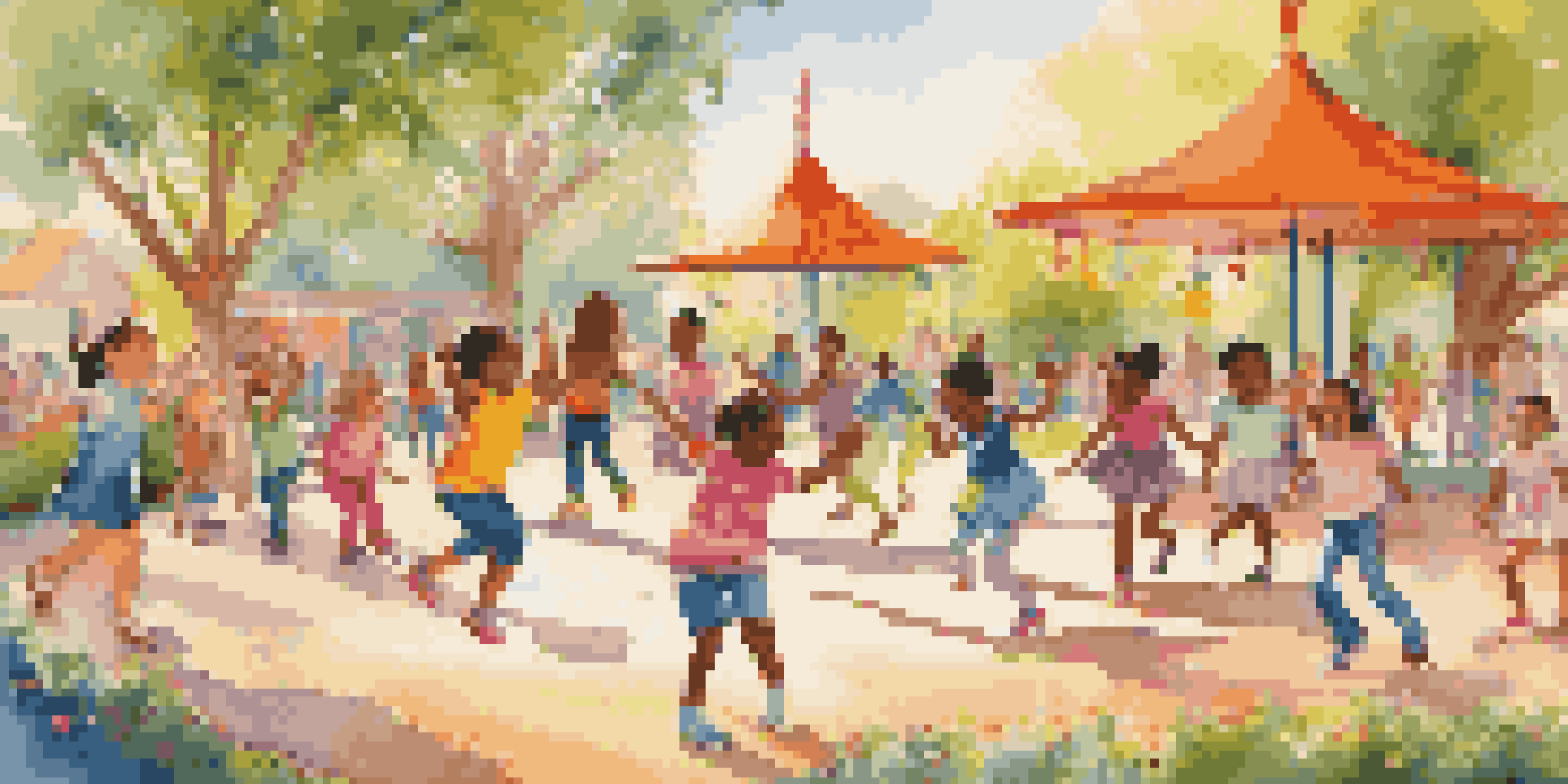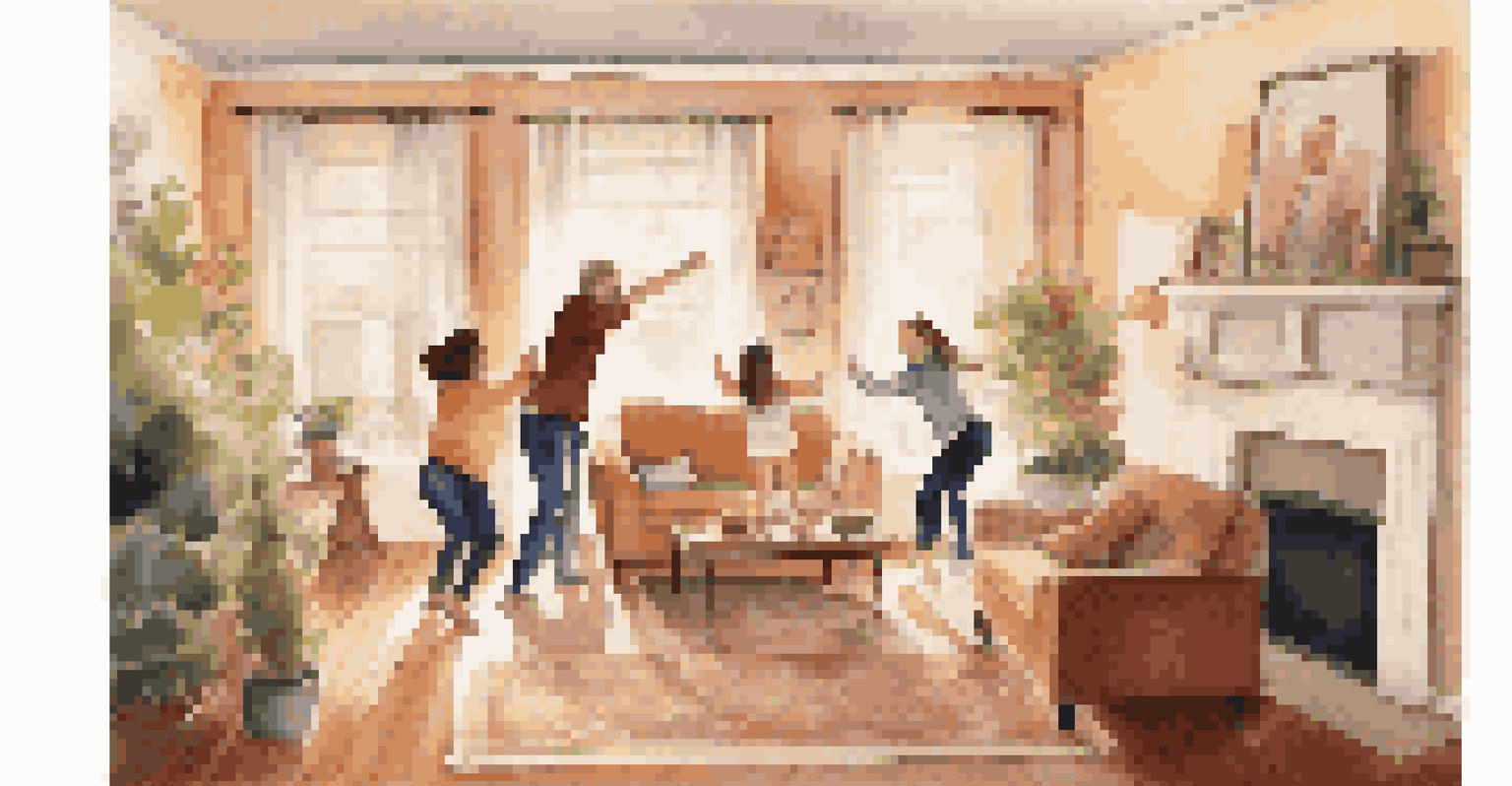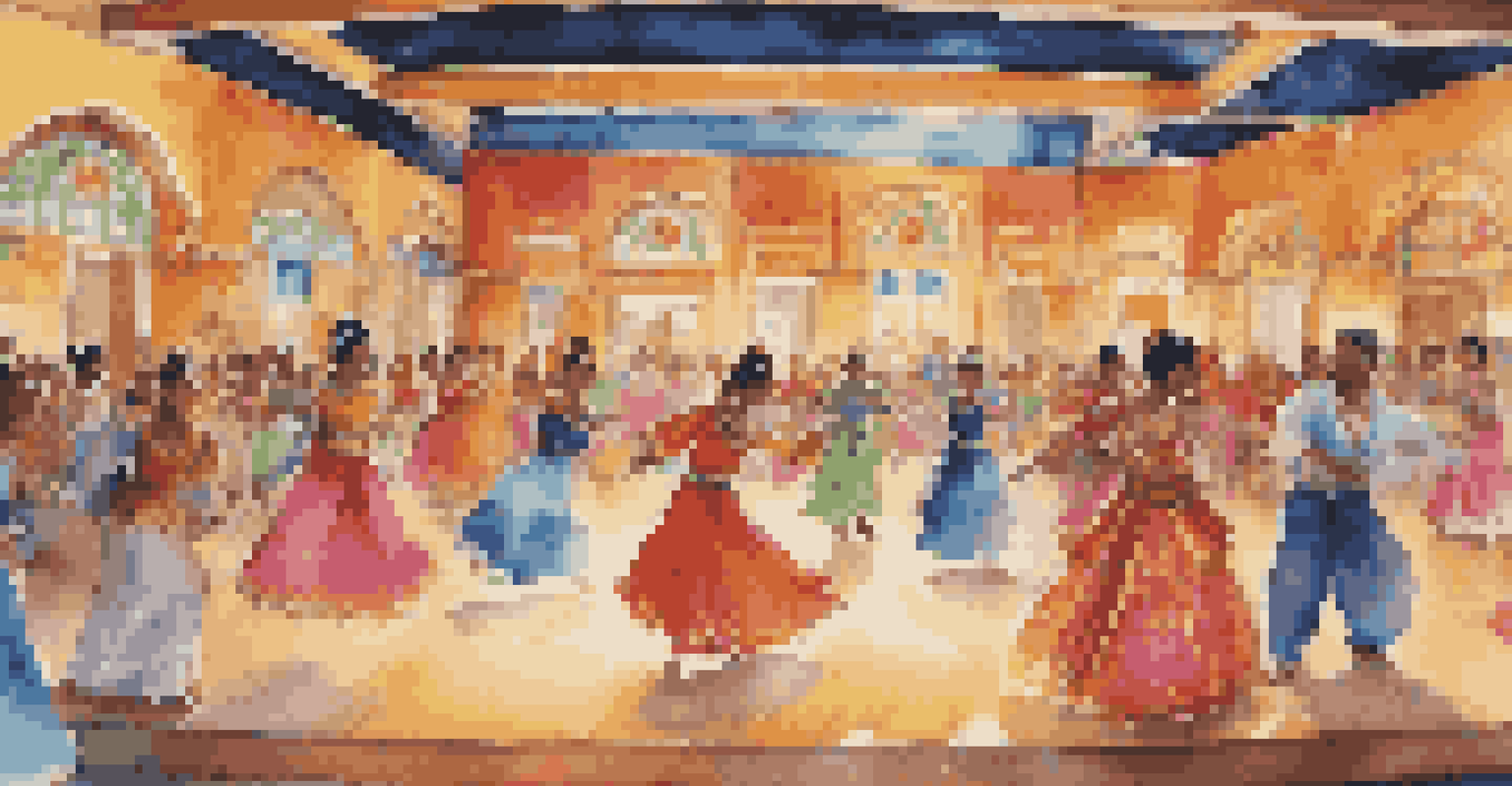The Evolution of Dance and Play in Early Childhood

The Significance of Play in Early Childhood Development
Play is often considered the heart of childhood, serving as a primary way children learn about the world. Through play, kids develop crucial skills such as problem-solving, creativity, and social interaction. It's not just about having fun; it's about building a foundation for future learning and emotional well-being. The act of play allows children to express themselves and explore their environment safely and freely.
Play is the highest form of research.
Research shows that children who engage in play tend to have better cognitive and emotional outcomes. For example, imaginative play encourages creative thinking and adaptability, skills that are increasingly valuable in today’s fast-paced society. Furthermore, interactions during play can lead to stronger relationships with peers and adults, laying the groundwork for effective communication skills.
Incorporating movement into play, such as dance, enhances these benefits even further. Movement-based play stimulates brain development and helps with physical coordination. This holistic approach to play makes it a vital area of focus for parents and educators alike.
The Role of Dance as a Form of Expression
Dance is more than just a series of movements; it's a powerful form of self-expression for children. From the moment they can move, kids instinctively wiggle, sway, and groove to music, showcasing their personalities and emotions. This early engagement with dance fosters confidence and self-awareness, important traits that will benefit them throughout life.

Moreover, dance allows children to communicate in ways that words cannot capture. For instance, a shy child may find it easier to express feelings through dance than by speaking. This non-verbal communication can serve as a bridge to deeper social interactions, helping children to connect with their peers on an emotional level.
Play Fuels Childhood Development
Through play, children build essential skills such as problem-solving, creativity, and social interaction.
Integrating dance into early childhood education can also enhance learning in other subjects. For example, using dance to teach math concepts like patterns and rhythms can help solidify understanding in a fun and memorable way. This cross-disciplinary approach enriches the educational experience and keeps children engaged.
Cultural Influences on Dance and Play
Dance and play are deeply influenced by culture, reflecting the values and traditions of a community. In many cultures, specific dances are used to celebrate milestones, tell stories, or even teach lessons. This cultural context enriches children's understanding of their own heritage while promoting respect for diversity as they learn about other cultures through dance.
Dance is the hidden language of the soul.
For instance, folk dances from various regions often involve storytelling elements that can captivate a child's imagination. By participating in these dances, children not only enjoy themselves but also gain insight into the lives and histories of others. This cultural exchange fosters empathy and a sense of belonging, vital components in any child's development.
Encouraging children to explore diverse dance forms can expand their worldview, nurture creativity, and inspire a lifelong love for movement. By exposing them to different cultural dances, parents and educators can instill an appreciation for diversity and the beauty of varied expressions of joy.
The Connection Between Movement and Learning
Research consistently shows that movement enhances cognitive functions in young children. When children engage in physical activities, such as dance or active play, their brains receive increased blood flow, which can boost memory and focus. This is why integrating movement into learning environments can lead to better academic outcomes.
Consider how often we see children learning their ABCs through songs and dances. This kinesthetic approach not only makes learning enjoyable but also reinforces concepts in a way that sticks. By pairing movement with academic content, educators can create a more dynamic and effective learning experience.
Dance Enhances Self-Expression
Dance allows children to express their emotions and communicate non-verbally, fostering confidence and deeper connections.
Furthermore, allowing children to move while they learn helps cater to various learning styles. Some children may thrive in a traditional classroom setting, while others may benefit from a more active approach. By recognizing and embracing these differences, we can create inclusive environments that support every child's learning journey.
Dance and Play as Tools for Social Skills Development
Both dance and play are vital in teaching children essential social skills. When kids engage in group play or dance activities, they learn how to cooperate, negotiate, and resolve conflicts. These experiences provide a safe space for children to practice interacting with others, which is crucial for their social development.
For example, in a dance class, children often work in pairs or small groups, requiring them to communicate and collaborate. They must take turns, listen to each other, and sometimes compromise, all of which are critical social skills. Through these interactions, kids build friendships and learn the dynamics of teamwork.
Moreover, participating in dance and play can help children build empathy and understand different perspectives. When they step into another's shoes—whether through role-playing games or dance styles from various cultures—they develop a deeper appreciation for their peers. This emotional intelligence is a cornerstone of healthy relationships in adulthood.
The Importance of Structured vs. Free Play
In early childhood, both structured and free play have their unique benefits. Structured play, which includes guided activities like dance classes or organized games, provides children with specific skills and frameworks within which to learn. For instance, a structured dance class can teach rhythm, coordination, and discipline, all while being enjoyable.
On the other hand, free play allows children the freedom to explore and create without restrictions. During free play, kids can use their imaginations to invent games, dance styles, or even stories. This unstructured time is essential for fostering creativity and helping children develop their interests and passions.
Balance Structured and Free Play
A mix of structured and free play nurtures creativity while teaching specific skills, leading to holistic child development.
Striking a balance between structured and free play is key for holistic development. While structured activities can provide valuable lessons, free play nurtures the imagination and allows for personal expression. Encouraging a mix of both can lead to more engaged and well-rounded children.
Incorporating Dance and Play at Home
Parents play a crucial role in fostering a love for dance and play at home. Simple activities like dancing to music together or creating obstacle courses can make a huge difference in a child's development. Not only do these activities promote physical health, but they also create cherished memories and strengthen the parent-child bond.
Encouraging kids to express themselves through movement can be as easy as turning on their favorite songs and dancing freely. This not only nurtures creativity but also allows children to release pent-up energy in a fun way. Moreover, participating in these activities together shows children that their interests are valued, which can boost their self-esteem.

Additionally, setting aside regular time for family play can help instill a lifelong love for movement and creativity. Whether it's a dance party in the living room or a playful game outside, these moments contribute to a well-rounded childhood, laying the groundwork for healthy habits and joyful experiences.